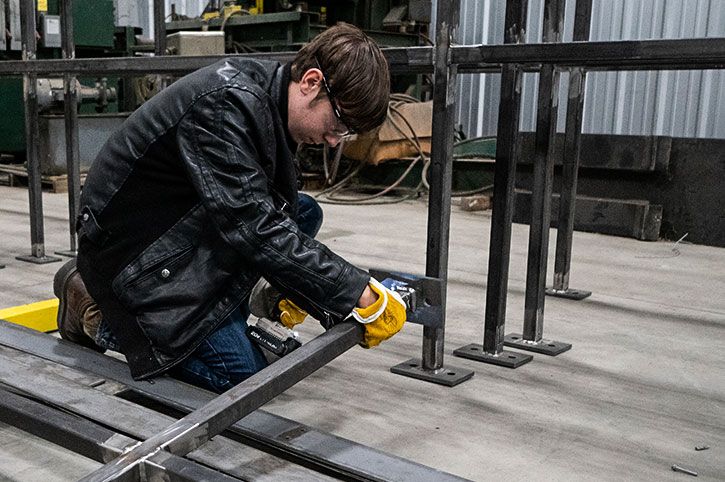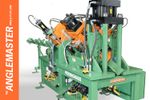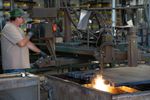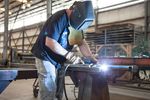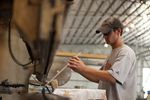A single accident on the shop floor can cost employers thousands or even millions if legal fees are involved. OSHA estimates employers shell out nearly $1 billion per week for direct workers’ compensation costs alone. That jaw-dropping number doesn’t even factor in skyrocketing healthcare expenses to treat an injury, potential lawsuits, and the indirect cost for each project that had to be stopped in mid-stream due to illness or injury.
After a workplace accident, it can take months or even years to generate enough new sales to cover the financial losses. For OEMs and manufacturers trying to keep costs down for their valued customers, OSHA has made the business case to make fabrication safety a top priority. Following critical safety protocols during project fabrication is key to controlling production costs and creating higher quality results. Full-service metal fabricators understand the ROI of protecting their most important long-term assets: their employees.
Here are five steps experienced fabricators take to safeguard their workforce and prevent mishaps that wreak financial havoc.
1: Fabrication Safety Via Healthy and Happy Employees
When workers go home each day safely to their families, there are fewer work stoppages, which means fewer opportunities for production mistakes. When employees feel safe, there’s less turnover and more consistency in production best practices, such as quality control. The result is a domino effect of healthy, productive workers implementing consistent quality control protocols.
These QC best practices in turn ensure each metal fabrication meets safety standards such as:
- Compliance with OSHA codes, especially for staircases, ladders, and platforms
- Adherence to specific, industry safety standards, such as material thickness in the fabrication
- Alignment with welding standards per the AWS, ASTM, and CWB specifications
These quality control measures also prevent mistakes that lead to costly rework and material handling expenses.
2: Fabrication Safety Through Workforce Education
Consistent fabrication safety training is critical to running an accident-free, productive shop floor. Just seconds of inattention or carelessness can result in cuts or burns from metal shards or sparks during grinding or welding. Improper material handling can cause minor sprains or even more severe spinal injuries.
Safety experts like Convergence Training suggest implementing these safety best practices to ensure a safe working environment:
- Never begin using any piece of equipment or tool until properly trained to do so. A reputable metal fabricator will ensure every employee is properly trained on all equipment protocols.
- Alert a supervisor if working conditions appear unsafe. Fabricators focused on quality will immediately take action to correct any workplace safety hazard.
- Use proper PPE and ensure all equipment is in working order. Do the face shields or goggles have scratches that could impair vision? Are there burns or webbing in the safety harnesses? Damaged PPE should be replaced immediately.
- Use correct posture when lifting and performing other materials handling tasks. Fabrication employees should always keep their backs straight and use their legs to lift. No stooping or twisting!
- Protect against falling objects. Objects should be stacked out of the way of aisles and work areas. Simple protections such as nets, toe boards, and toe rails can prevent costly accidents and injuries.
3: Fabrication Safety Through Good Housekeeping
When employees have to sidestep clutter on the shop floor, it can put them in hazardous, close proximity to running machinery or equipment. Just one slip could result in a finger or other body part getting caught in the metal trapping space of a cutting guillotine. Additionally, when employees have to stop to move debris out of the way, it takes more time to complete a task, slowing production.
To ensure efficiency and fabrication safety, good shop housekeeping should include:
- Organizing the entire facility in accordance with quality control standards
- Making sure every tool is in the correct location
- Never allowing scrap metal or other material to pile up on the floor
- Stacking boxes clear of walkways and emergency exits
- Ensuring heavy equipment is stored in an area where workers don’t have to stoop to pick it up
4: Build a Reputation for Fabrication Safety
As noted earlier, reducing employee turnover is tied to consistent quality control and fabrication safety. When a metal fabricator earns the reputation as a safe place to work, it attracts highly trained job applicants and prevents skilled labor from seeking greener employment pastures. A safe workplace is viewed as a great place to work, and in turn earns the reputation as a great place to do business.
Some best practices to earn a safe workplace reputation include:
- Posting specific diagrams and examples to follow near equipment that could pose health risks if not used properly
- Providing proper metal cutting and forming education to prevent accidents and mishaps
- Training employees on how to properly use machinery and noting that each piece of equipment has its own safety standards
- Making safety procedural training and regular equipment inspections part of the regular work routine
- Reinforcing all of these best practices with consistent employee training and safety procedures
5: Fabrication Safety to Cover Your OSHA Bases
Industrial access equipment is one example of how following fabrication safety due diligence can help avoid costly OSHA fines. Ladders, platforms, stairs, and other fabricated equipment each has its own unique set of industry specifications and OSHA standards. A true metal fabricator can design industrial access equipment to meet even the toughest, industry-required regulatory specifications.
Such metal fabrications may include:
- A platform to provide workers a chance to safely rest and get their footing
- A staircase to connect different floors and withstand heavy foot traffic
- A caged ladder or fall protection to help workers access a tank or silo via OSHA’s Standard 1910.28
Ensuring industrial access equipment meets key safety standards is fundamental to what we do at Southern Metal Fabricators. From designing industrial staircases and platforms to cutting and forming bulk storage solutions and accessories, we’ve learned that fabrication safety is key to quality control. Our QC best practices prevent costly fabrication mistakes and help us consistently deliver OSHA-compliant, superior metal fabrications.
Additionally, we go beyond OSHA compliance with safety best practices that deliver ROI beyond avoiding fines. You can learn more about the financial benefits of a safety-first fabrication culture with our new white paper, Metal Fabrication Safety ROI: A Bottom-Line Breakdown for Manufacturers and OEMs.
If you’re ready to partner with a true, full-service fabricator who can help you exceed your fabrication safety and ROI expectations, give us a chance to say, “Yes, we can do that!” by contacting us today.
